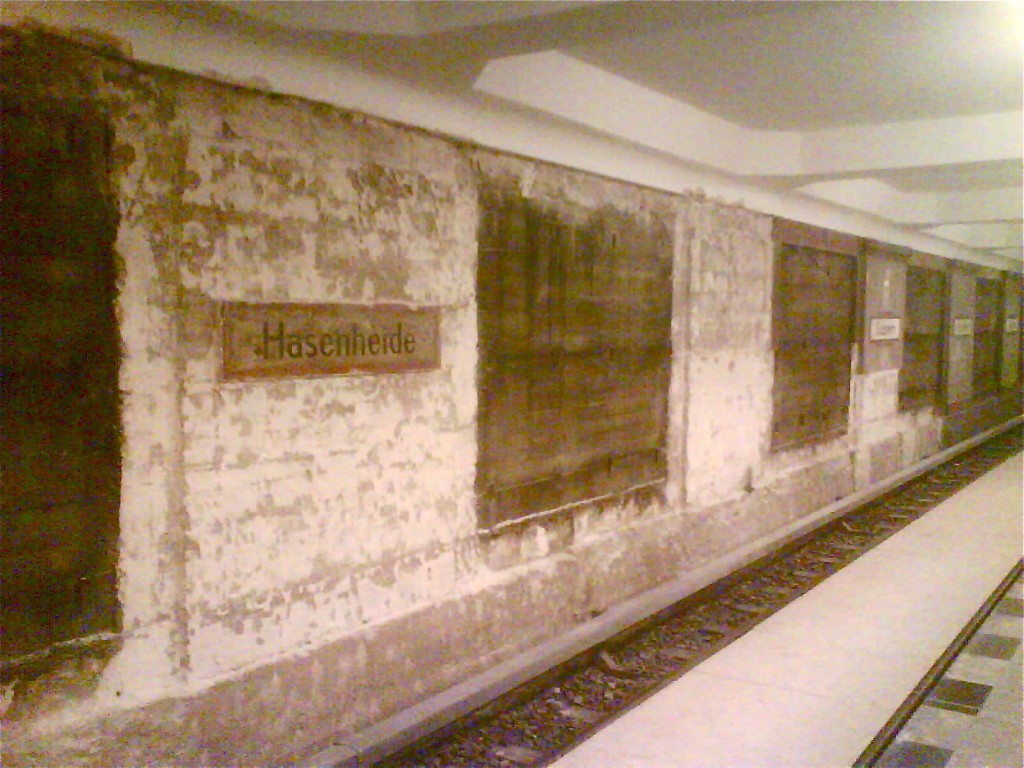The Changing Names of Südstern U-Bahn

This underground station in Kreuzberg has had many names.
It was born Hasenheide in 1924, it became Kaiser-Friedrich-Platz and then Gardepionierplatz under the Nazis, then after the war the (heavily damaged) station was restored with the ‘demilitarised name’ Südstern, that of the square directly above it. There is a central stairwell to a glass-bound pavillion, like a belvedere, looking out to the tangle of trees and accidental roses on Körtestraße. A florist sells herbs and carnations, and Turkish children circle on their bikes before the organic bakery.
The U7 line is currently being restored. The vaulted ceiling at Mehringdamm has been exposed. And two stations along, at Südstern, the walls stripped, revealing its semiotic history.
James and I stood before the old station signs from the twenties, Hasenheide, and wondered why the name had been changed. And we gravitated to proleptic explanations, as Kreuzberg is now obsessed with its rapid gentrification. Hasenheide (meaning: ‘field of hares’) is the name of the long avenue running to Hermannplatz, and the park alongside it, known for its flourishing drug trade. We could imagine the name Hasenheide driving down the rents, a community drive to distance the genteel square from its neighbours, but we were wrong.
A week later the name Hasenheide had been taken down. The walls of the station are textured like Rothkos. We were among the last people to see a sign that was used for almost a decade by the Weimar-era inhabitants of this neighbourhood to signal that they were finally home. It is odd to see the name go, I feel differently about the train platform now, although the place looks otherwise almost the same.
I walk outside and somehow expect to see bunnies hopping all around me between the circling bicycles. And then, in a blink, they have disappeared.



Small comment on the translation: Hasen are hares not rabbits. I do not know where this is rather a English-English distinction which might not be the North-American one. However there is a clear biological distinction. Moreover I think in a city, where there are plenty of rabbits around but few if any hares – one should be aware of it. When Hasenheide – the street and the park – were founded city boundaries were much closer and there might actually have been more hares coming in from the countryside.
point well taken! i will make a correction in the text above! thank you.
p.s. an interesting link to the biological differences: http://www.orcca.on.ca/~elena/useful/bunnies.html
I suppose they could all be grouped as ‘bunnies’. Or just given names, Flopsy, Cottontail and Peter.
Actually North Americans also distinguish between hares and rabbits, but I think it’s fair to say that English-speakers tend to group the two together as the same kind of animal, more or less. So I like calling them bunnies…